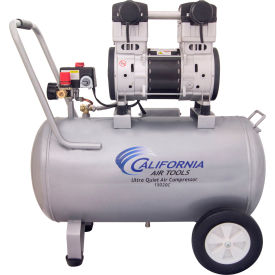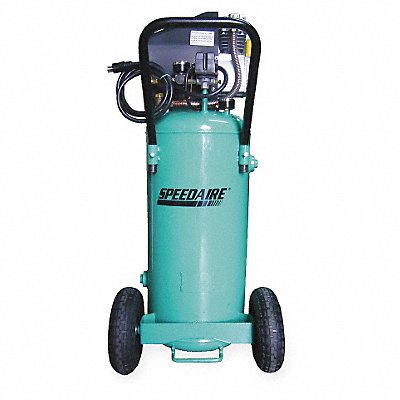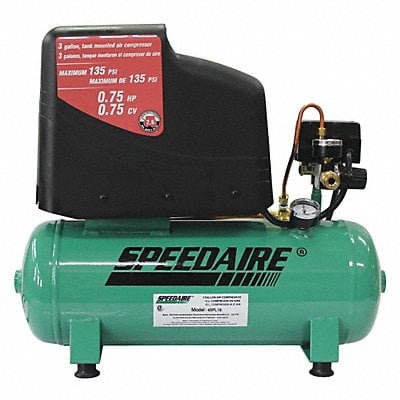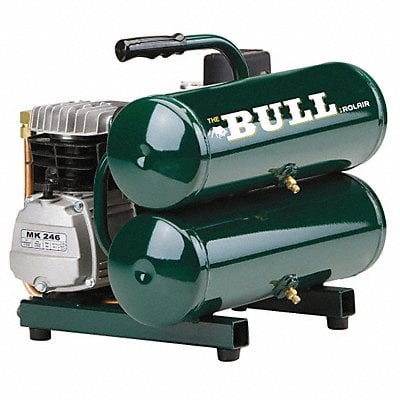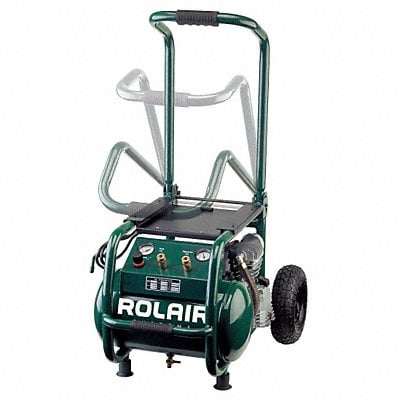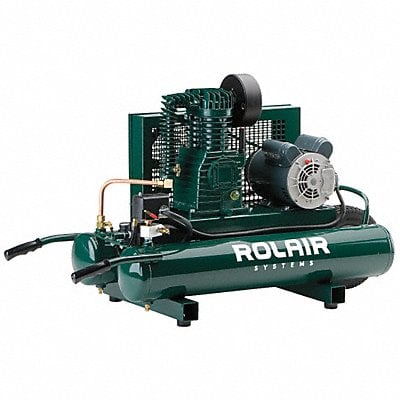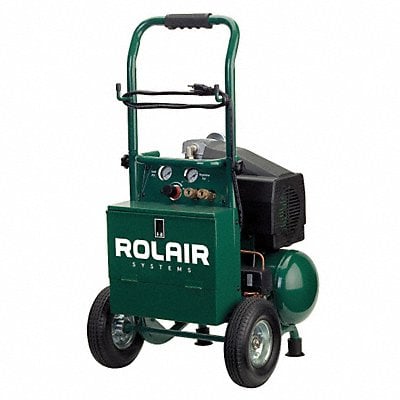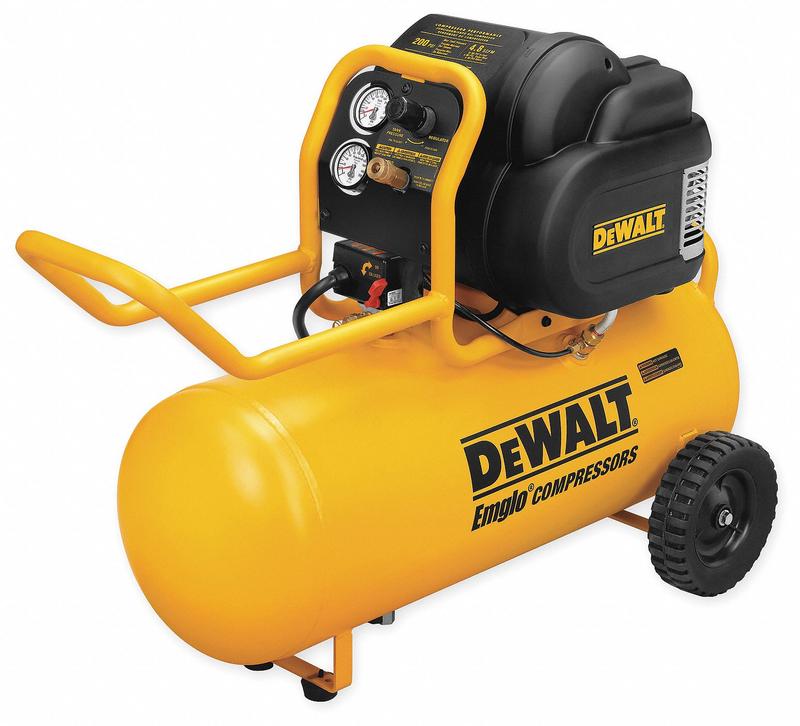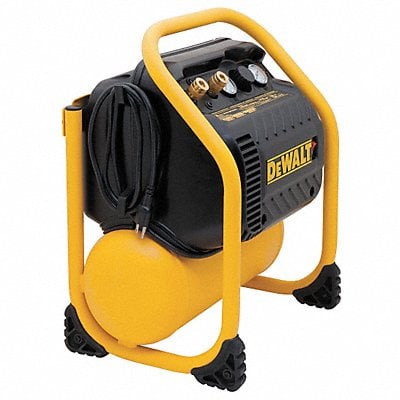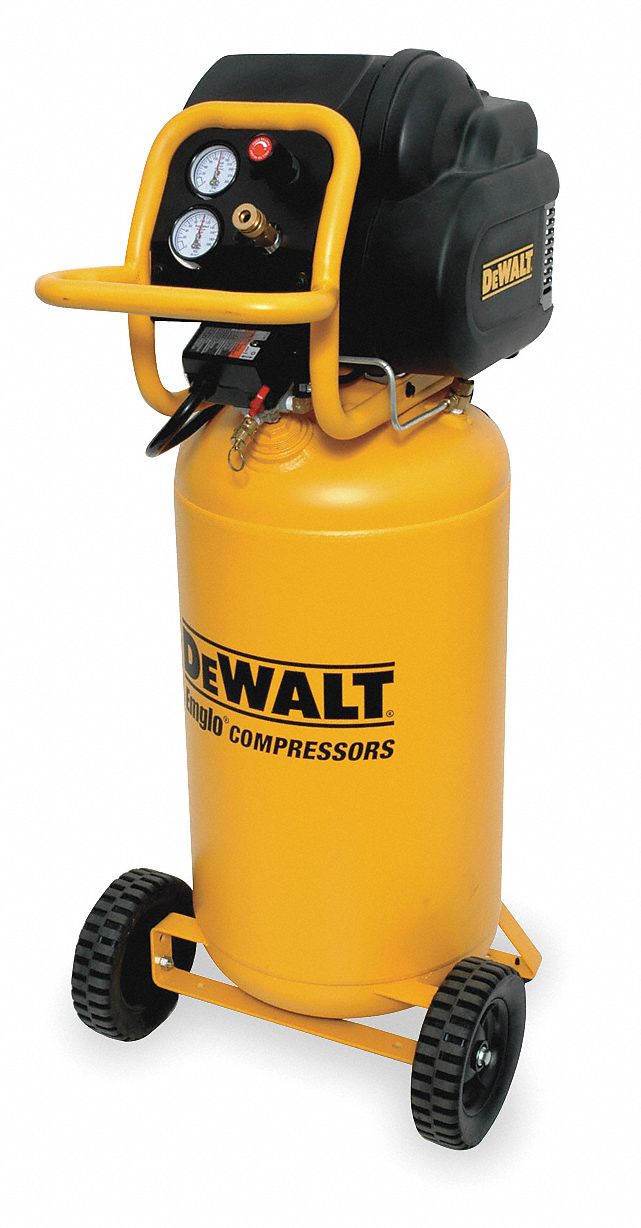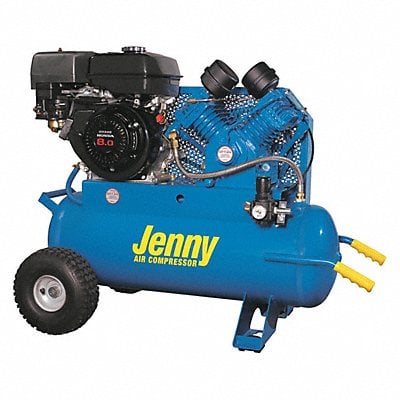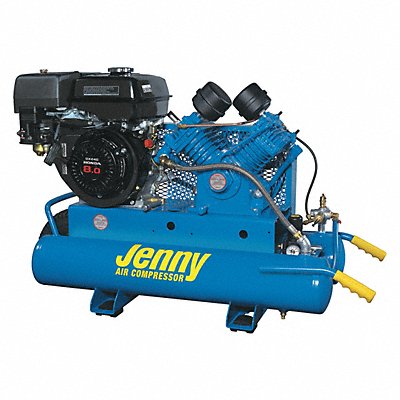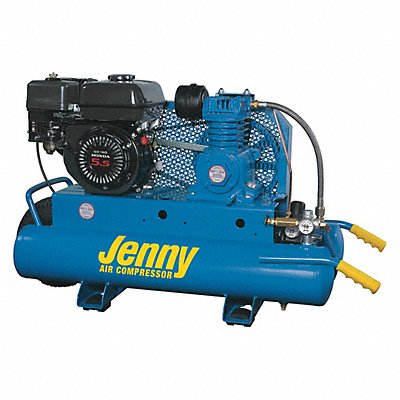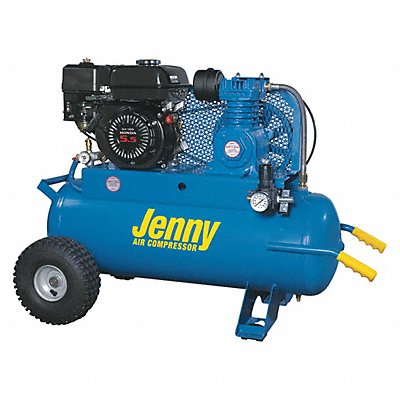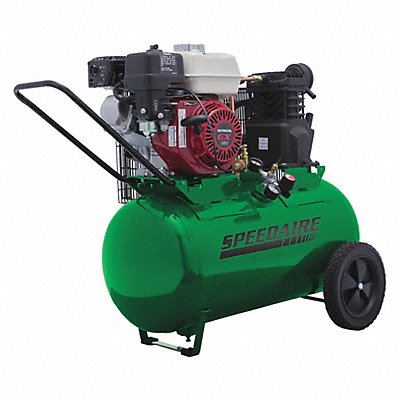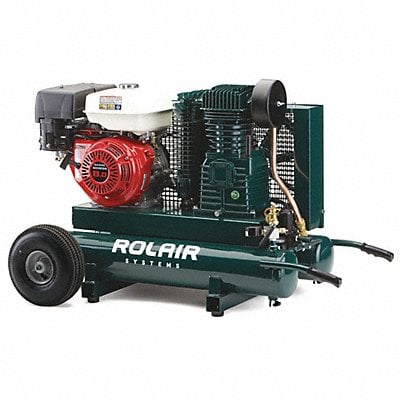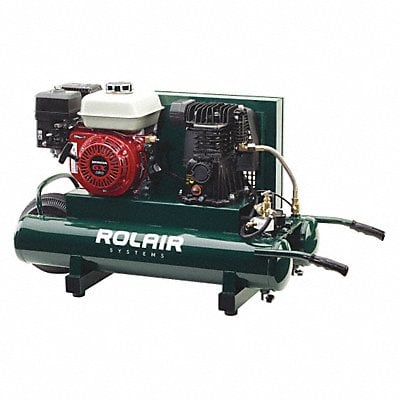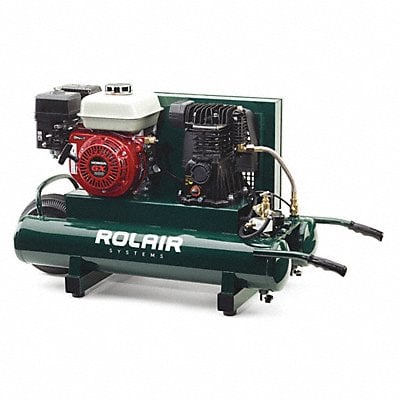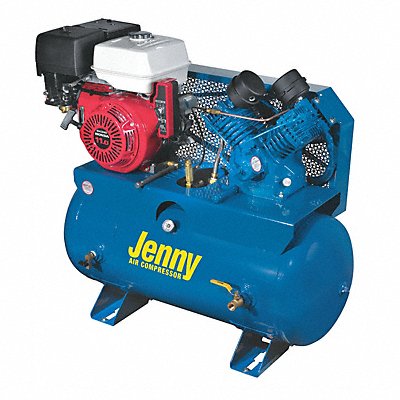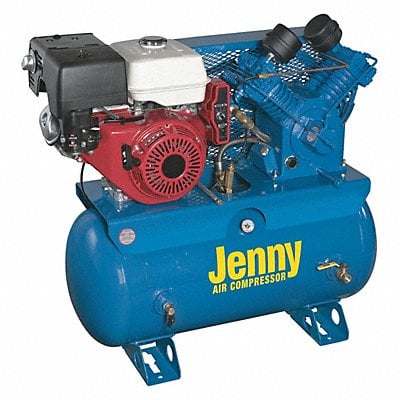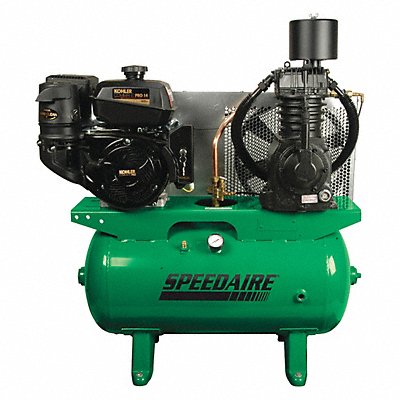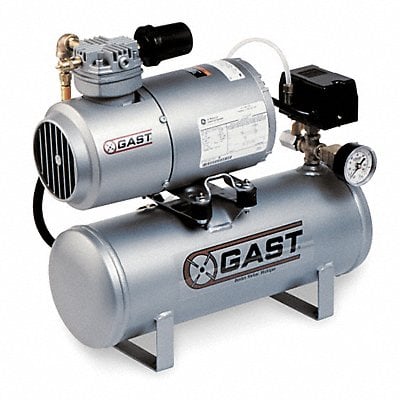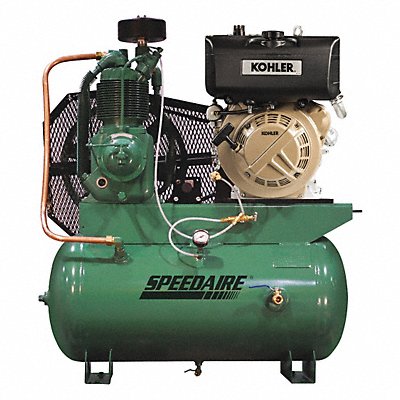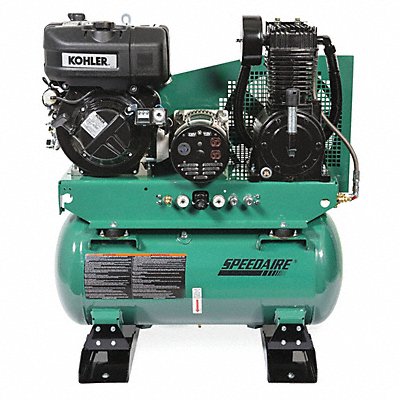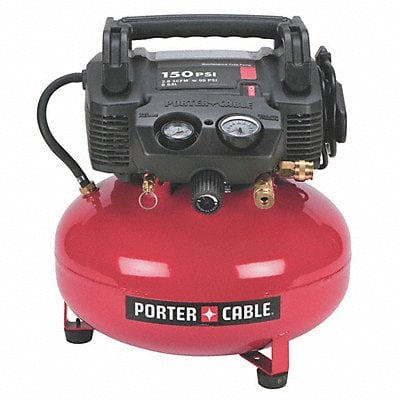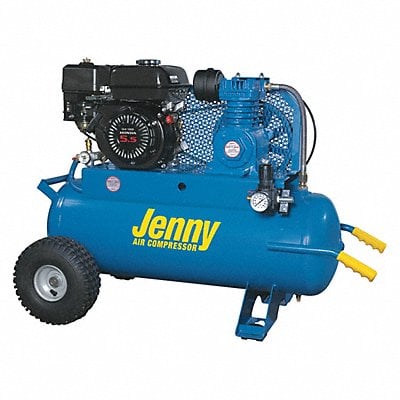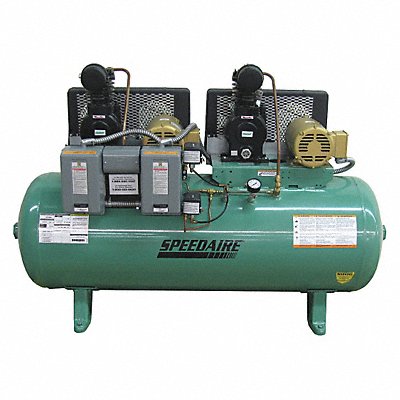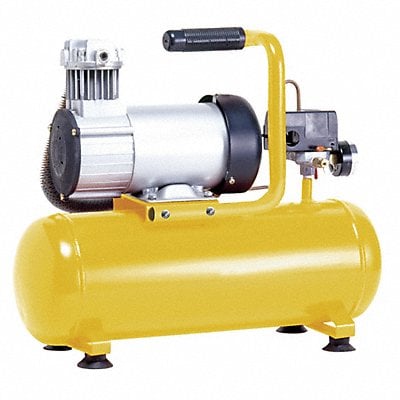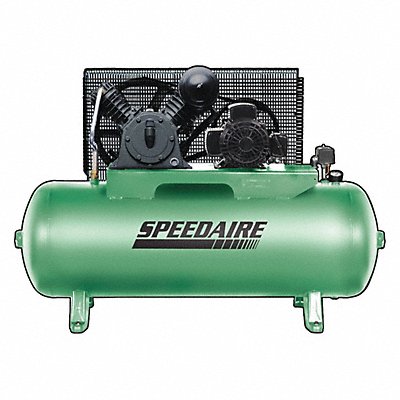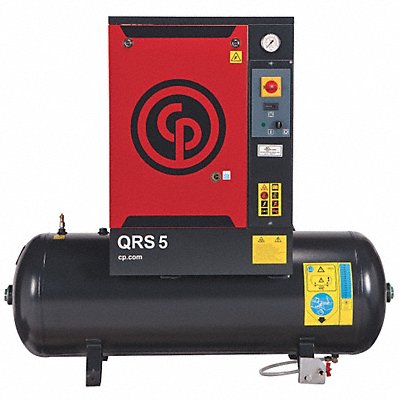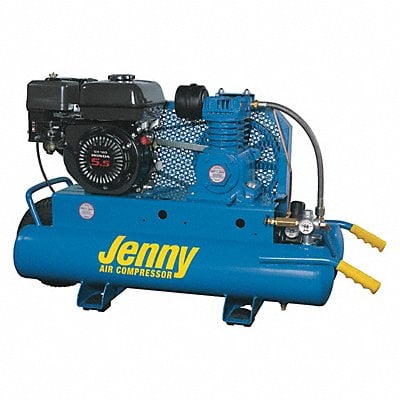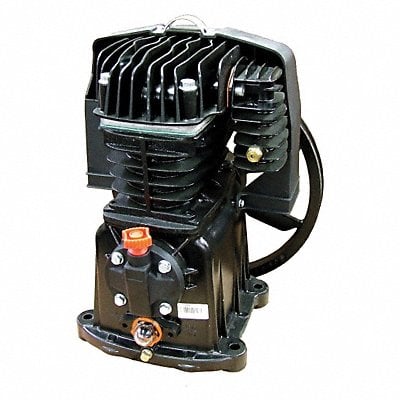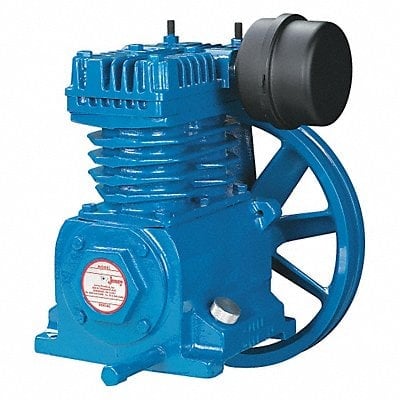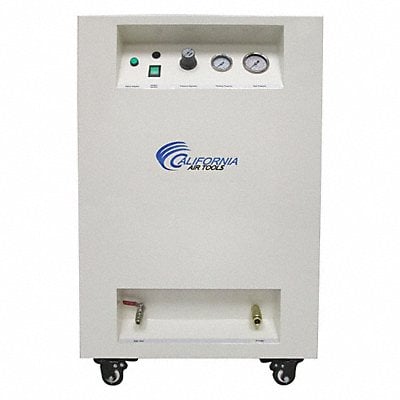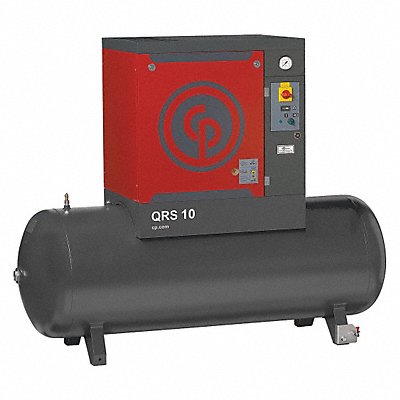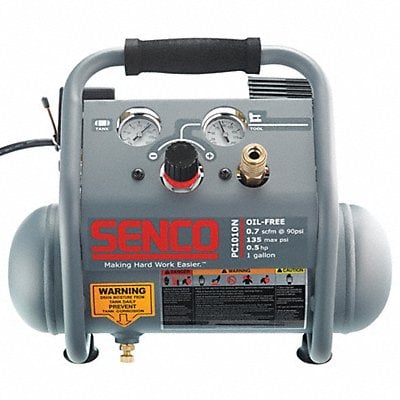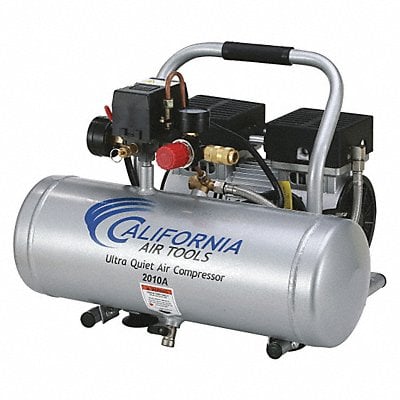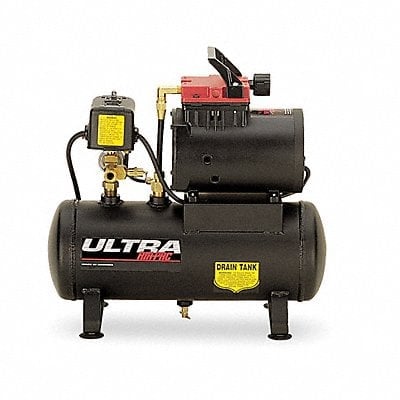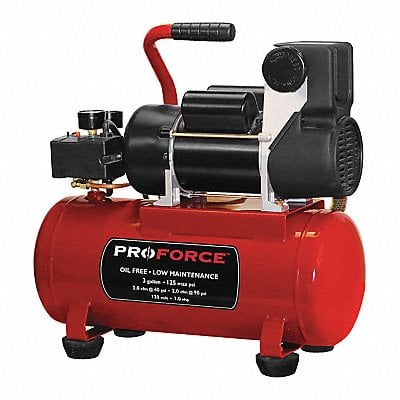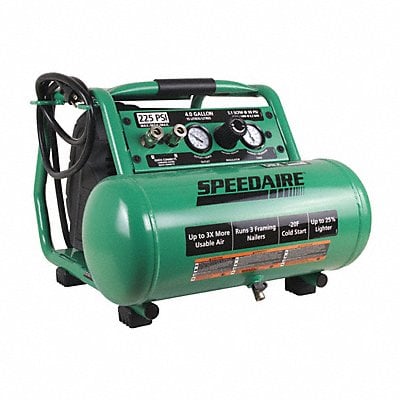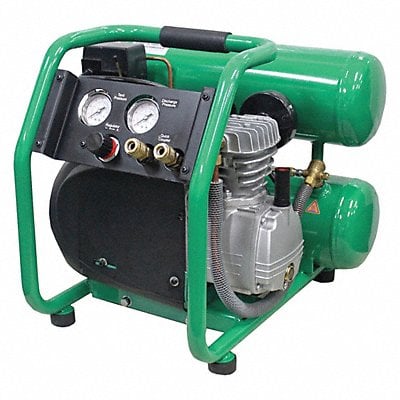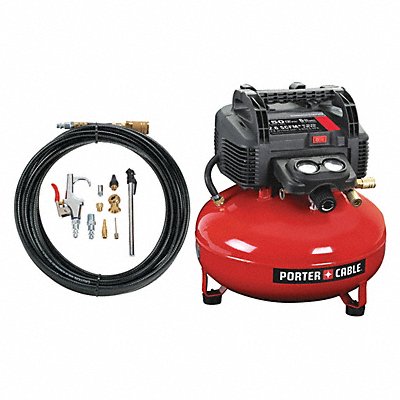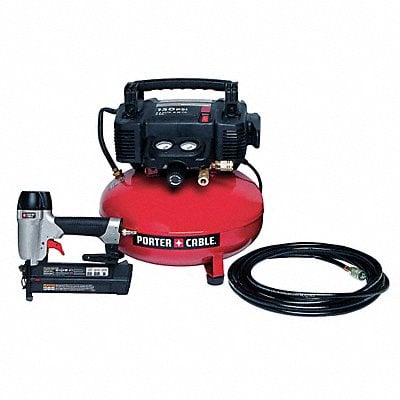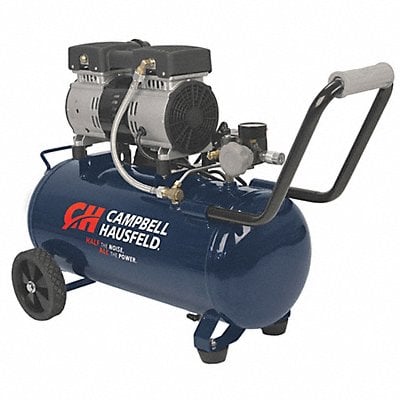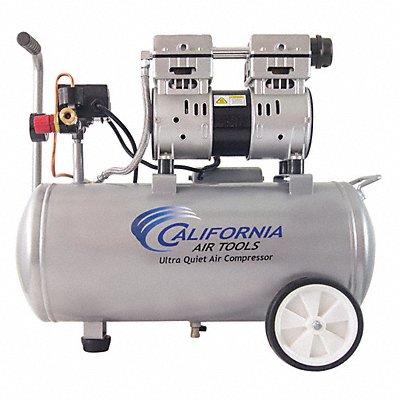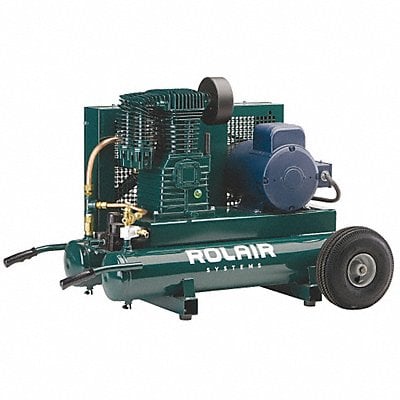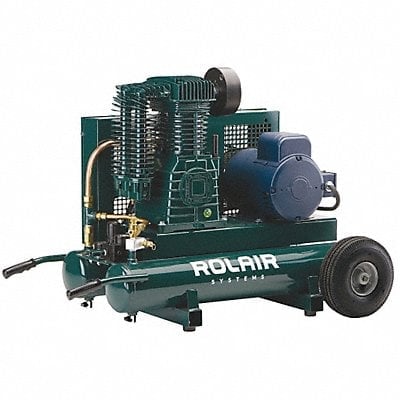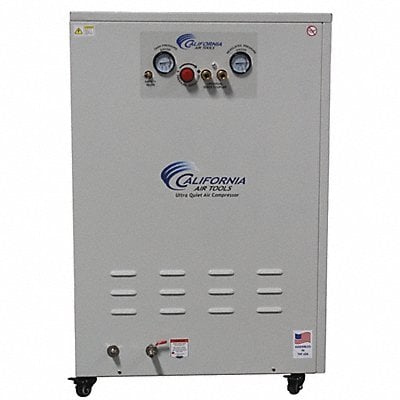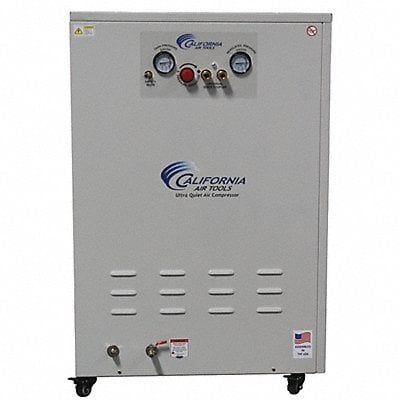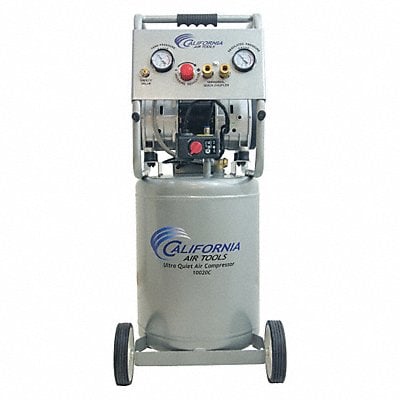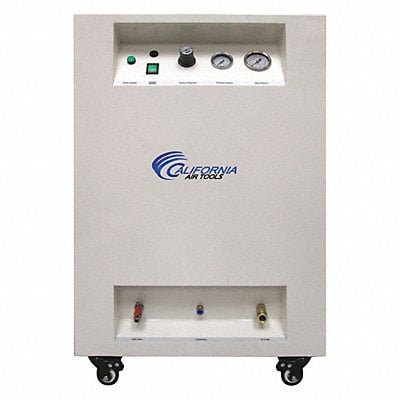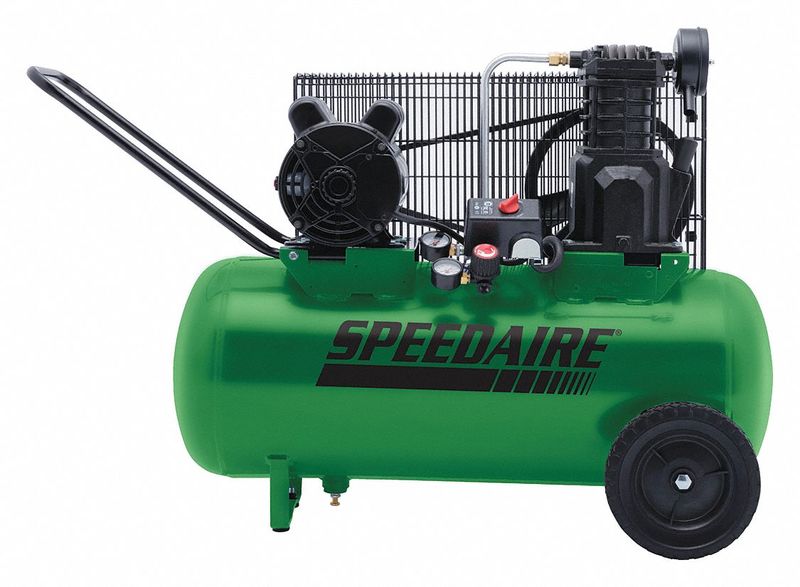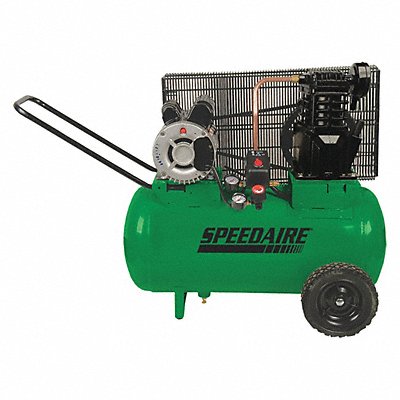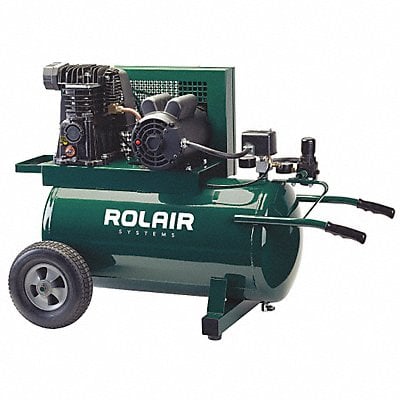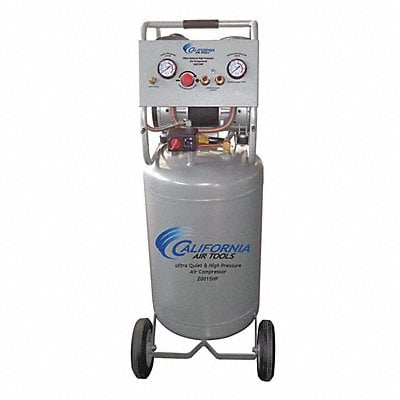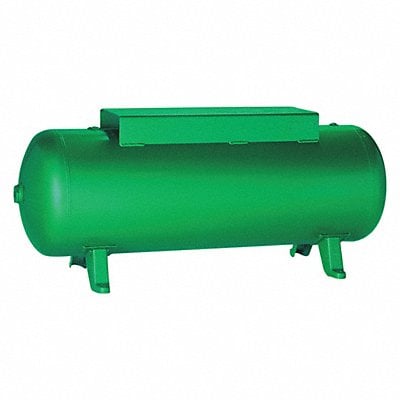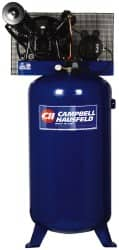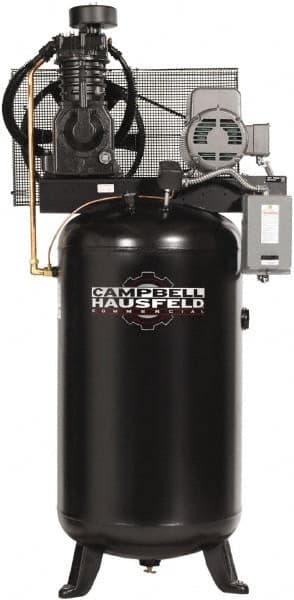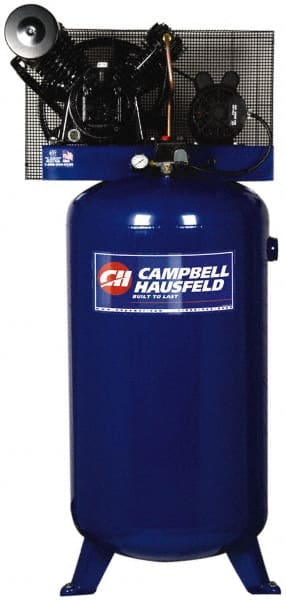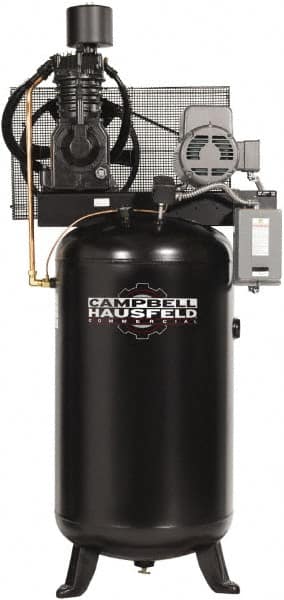Choosing the Best Air Compressor: Types, Features, and Buyer’s Guide

Introduction
Air compressors are essential for many applications, from home improvement projects to heavy-duty industrial work. Whether you need a compact unit for inflating tires or a high-capacity compressor for manufacturing, selecting the right air compressor ensures efficiency, longevity, and performance. This guide covers the different types of air compressors, key features to consider, and recommendations based on leading brands. Lets get into the details...
1. Understanding Air Compressor Types
1.1 Portable Electric Air Compressors
Portable electric air compressors are lightweight, easy to transport, and ideal for home projects, automotive work, and small job sites. These compressors are powered by electricity and do not require fuel, making them more environmentally friendly and low maintenance.
Recommended Brands
-
California Air Tools IncSpecial Price $525.29This product is sold in increments of 1
-
California Air Tools IncSpecial Price $540.99This product is sold in increments of 1
-
California Air Tools IncSpecial Price $629.29This product is sold in increments of 1
-
California Air Tools IncSpecial Price $669.29This product is sold in increments of 1
1.2 Portable Gas Air Compressors
Portable gas air compressors are ideal for worksites where electricity is not readily available. These compressors provide strong power output and are often used in construction, outdoor maintenance, and field service operations.
Recommended Brands
-
Mi-T-MSpecial Price $4301.49This product is sold in increments of 1
-
Mi-T-MSpecial Price $4581.29This product is sold in increments of 1
-
Mi-T-MSpecial Price $4345.29This product is sold in increments of 1
-
Mi-T-MSpecial Price $2757.99 Regular Price $2893.82This product is sold in increments of 1
1.3 Stationary Electric Air Compressors
Stationary electric air compressors are used in industrial settings where high-capacity compressed air is required. These compressors are installed in workshops, manufacturing plants, and large garages.
Recommended Brands
1.4 Stationary Gas Air Compressors
Stationary gas-powered air compressors are used in large industrial applications where electrical power is limited. These compressors deliver high PSI and airflow to support demanding equipment.
Recommended Brands
2. Top Features to Look for in an Air Compressor
When choosing an air compressor, several key features determine its performance, durability, and efficiency. The right compressor depends on the intended use, work environment, and power availability.
2.1. Key Features to Consider
- Tank Size: A larger tank allows for more compressed air storage, which is beneficial for continuous use in industrial applications. Smaller tanks work well for intermittent use, such as inflating tires or powering brad nailers.
- CFM Rating (Cubic Feet per Minute): Determines the amount of air output. Tools requiring continuous airflow, such as paint sprayers and sandblasters, need a higher CFM rating.
- Power Source:
- Electric Compressors: Ideal for indoor and stationary use, as they require a consistent power source and run more quietly.
- Gas-Powered Compressors: Best for remote job sites or outdoor locations where electricity is unavailable. These models offer high portability but emit fumes, making them unsuitable for enclosed spaces.
- Noise Level: A quiet air compressor is essential for indoor use, workshops, or residential areas. Industrial models tend to be louder but are designed for heavy-duty applications.
- Portability:
- Portable Compressors: Lightweight models with wheels or handles make it easy to move them around job sites or home garages.
- Stationary Compressors: Designed for high-powered tasks, these are typically larger, more powerful, and fixed in one location.
- Attachments and Accessories: Ensure compatibility with air hoses, spray guns, nail guns, impact wrenches, and other pneumatic tools.
2.1.1. Gas vs. Electric Air Compressors: Which One to Choose?
| Feature | Gas-Powered Compressors | Electric-Powered Compressors |
|---|---|---|
| Power Source | Runs on gasoline or diesel, ideal for remote job sites | Requires an electrical outlet, better for indoor use |
| Portability | Highly portable, no need for electricity | Limited to areas with power supply |
| Performance | High-powered for industrial and outdoor applications | Suitable for workshops, garages, and home use |
| Noise Level | Louder due to engine operation | Quieter, ideal for noise-sensitive environments |
| Maintenance | Requires fuel refills and regular engine maintenance | Easier maintenance, no fuel needed |
| Environmental Impact | Emits fumes, not suitable for enclosed spaces | Clean energy source with no emissions |
2.1.2. Choose a Gas Air Compressor If:
- You need a powerful unit for outdoor or remote job sites
- You work in construction, roofing, or large-scale industrial applications
- Electrical outlets are not readily available
2.1.3. Choose an Electric Air Compressor If:
- You work indoors or in a confined space
- You prefer a quieter, low-maintenance unit
- A reliable power source is available
2.2. Portable vs. Stationary Air Compressors: Which One Fits Your Needs?
| Feature | Portable Compressors | Stationary Compressors |
|---|---|---|
| Mobility | Lightweight, often with wheels for transport | Fixed in place, requires dedicated installation |
| Tank Size | Smaller tanks (5-30 gallons) | Larger tanks (60-80 gallons) for extended use |
| Usage | Best for quick tasks like inflating tires, small repairs, and mobile jobs | Ideal for continuous operation in workshops and factories |
| Power Source | Available in both electric and gas models | Usually electric-powered for consistent performance |
| Airflow (CFM) | Lower CFM output, suitable for small pneumatic tools | Higher CFM for industrial-grade tools and equipment |
2.2.1. Choose a Portable Air Compressor If:
- You need a lightweight, easy-to-move unit for different job sites
- Your work involves smaller tools, such as nail guns and tire inflators
- You need a budget-friendly option for occasional use
2.2.2. Choose a Stationary Air Compressor If:
- You require consistent air supply for heavy-duty applications
- Your workshop or factory relies on high-powered pneumatic tools
- You need a long-term, high-capacity solution
By considering these factors, you can choose the best air compressor that aligns with your specific needs, whether for DIY projects, automotive repair, or industrial operations.
2.3. 1-Stage vs. 2-Stage Air Compressors: Which One is Right for You?
| Feature | 1-Stage Air Compressors | 2-Stage Air Compressors |
|---|---|---|
| Compression Process | Air is compressed once and stored in the tank | Air is compressed twice for higher efficiency and power |
| Maximum PSI | Usually up to 125 PSI | Can reach up to 175 PSI |
| Best For | Light to moderate use, DIY tasks, automotive repairs | Heavy-duty industrial applications, continuous operation |
| Efficiency | Less efficient for prolonged use | More efficient and cooler operation for long durations |
| Portability | More compact and portable | Typically larger and stationary |
| Cost | More affordable for home and small business use | Higher initial investment, but cost-effective for heavy use |
2.3.1. Choose a 1-Stage Air Compressor If:
- You need an air compressor for home, garage, or small workshop use.
- Your tasks include inflating tires, using nail guns, or airbrushing.
- You want a more affordable and portable option.
2.3.2. Choose a 2-Stage Compressor If:
- You need higher PSI and CFM for industrial or continuous-duty tasks.
- Your work involves running multiple air tools simultaneously.
- You want a more efficient, durable, and long-lasting compressor.
-
Kellogg CompressorSpecial Price $361.29This product is sold in increments of 1
-
Kellogg CompressorSpecial Price $304.49This product is sold in increments of 1
-
Kellogg CompressorSpecial Price $459.99This product is sold in increments of 1
-
Kellogg CompressorSpecial Price $350.99This product is sold in increments of 1
2.4. Understanding Air Compressor Horsepower (HP) Ranges
When choosing an air compressor, the horsepower (HP) rating is a key factor that determines its power output, efficiency, and ability to handle different applications. Below is a breakdown of different HP ranges and their best use cases.
| HP Range | Best For | Typical CFM Output | Common Applications | Portability | Power Source |
|---|---|---|---|---|---|
| Under 1 HP | Light-duty tasks | 0.5 - 3 CFM | Airbrushing, inflating tires, small pneumatic tools | Highly portable | Electric |
| 1-2 HP | Home & small workshop use | 3 - 6 CFM | Nail guns, staplers, small spray painting jobs | Compact, portable | Electric |
| 2-5 HP | Medium-duty tasks | 6 - 15 CFM | Impact wrenches, framing nailers, auto repairs | Wheeled or stationary | Electric or Gas |
| 5-8 HP | Industrial & professional use | 15 - 30 CFM | Sandblasting, automotive work, running multiple tools | Larger stationary units | Electric or Gas |
| 9-11+ HP | Heavy-duty industrial applications | 30+ CFM | Manufacturing, construction, large-scale operations | Large, stationary only | Gas or Electric (3-phase) |
2.4.1. Which HP Range Should You Choose?
2.4.1.1. Choose an Air Compressor Under 1 HP (typically 3/4 HP) If:
- You need a lightweight, highly portable compressor for occasional use.
- Your primary tasks include inflating tires, airbrushing, or powering small pneumatic tools.
- You prefer a quiet, electric-powered unit for indoor use.
2.4.1.2. Choose a 1 HP to 2 HP Air Compressor If:
- You work on home DIY projects, small workshop tasks, or occasional job site use.
- You need moderate airflow for nail guns, staplers, and basic spray painting jobs.
- Portability is important, but you require more power than a sub-1 HP unit.
-
Chicago PneumaticSpecial Price $4280.29This product is sold in increments of 1
-
Chicago PneumaticSpecial Price $3582.79This product is sold in increments of 1
-
SpeedaireSpecial Price $4293.79This product is sold in increments of 1
-
SpeedaireSpecial Price $3674.29This product is sold in increments of 1
2.4.1.3. Choose a 3 HP, 4 HP, or 5 HP Air Compressor If:
- You require more air capacity for automotive repair, construction, or professional tasks.
- You need a balance between portability and performance.
- You want the option of a gas-powered unit for outdoor or job site work.
-
Chicago PneumaticSpecial Price $7472.79This product is sold in increments of 1
-
Chicago PneumaticSpecial Price $7529.29This product is sold in increments of 1
-
SpeedaireSpecial Price $4293.79This product is sold in increments of 1
-
SpeedaireSpecial Price $3674.29This product is sold in increments of 1
2.4.1.4. Choose a 6 HP, 7 HP, or 8 HP Air Compressor If:
- You need continuous airflow for high-powered tools like sandblasters and impact wrenches.
- You work in an industrial setting, automotive shop, or high-demand environment.
- Stationary units are acceptable, and you need more CFM output.
-
Chicago PneumaticSpecial Price $12202.49This product is sold in increments of 1
-
Chicago PneumaticSpecial Price $11790.99This product is sold in increments of 1
-
Kellogg CompressorSpecial Price $361.29This product is sold in increments of 1
-
Kellogg CompressorSpecial Price $304.49This product is sold in increments of 1
-
SpeedaireSpecial Price $4440.49This product is sold in increments of 1
-
SpeedaireSpecial Price $3910.49This product is sold in increments of 1
-
California Air ToolsSpecial Price $1671.79This product is sold in increments of 1
-
California Air ToolsSpecial Price $1805This product is sold in increments of 1
2.4.1.5. Choose a 9 HP, 10 HP, or 11 HP Air Compressor If:
- Your business or industrial facility requires a high-performance, heavy-duty compressor.
- You need to run multiple air tools at once with sustained high CFM output.
- You require a gas or 3-phase electric unit for large-scale applications.
-
Chicago PneumaticSpecial Price $10149.29This product is sold in increments of 1
-
SpeedaireSpecial Price $6907.29This product is sold in increments of 1
-
SpeedaireSpecial Price $6219.29This product is sold in increments of 1
-
Chicago PneumaticSpecial Price $13659.49This product is sold in increments of 1
2.5. Understanding Air Compressor Tank Sizes (Gallons)
The size of an air compressor’s tank is a key factor in determining how long it can supply compressed air before needing to refill. Larger tanks provide sustained airflow for heavy-duty applications, while smaller tanks are ideal for portability and light-duty tasks. Below is a detailed breakdown of various tank sizes, their use cases, and key considerations.
| Tank Size | Best For | Typical CFM Output | Common Applications | Portability | Power Source |
|---|---|---|---|---|---|
| Under 1 Gallon | Ultra-light tasks | 0.5 - 2 CFM | Small inflators, airbrushing, dusting | Extremely portable | Electric |
| 1-2 Gallons | Light-duty tasks | 2 - 4 CFM | Staplers, small brad nailers, hobby projects | Highly portable | Electric |
| 2-4 Gallons | Small to medium tasks | 4 - 7 CFM | Trim work, framing nailers, small spray painting jobs | Portable, compact | Electric |
| 5-8 Gallons | General-purpose use | 7 - 12 CFM | Roofing, auto repairs, medium spray painting jobs | Wheeled for mobility | Electric or Gas |
| 9-11 Gallons | Medium-duty applications | 12 - 15 CFM | Industrial tasks, continuous tool operation, sandblasting | Stationary or large wheeled | Gas or Electric |
| 15 Gallons | Professional use | 15 - 18 CFM | Impact wrenches, die grinders, auto body work | Stationary, some wheeled models | Electric |
| 20 Gallons | Workshop & garage use | 18 - 20 CFM | Automotive repair, air ratchets, HVLP spray painting | Stationary or semi-portable | Electric |
| 30 Gallons | Heavy-duty applications | 20 - 25 CFM | Manufacturing, CNC machine air supply, continuous air tools | Stationary | Electric or Gas |
| 40+ Gallons | Industrial & commercial use | 25+ CFM | Large-scale manufacturing, body shops, continuous sandblasting | Stationary, high CFM output | Gas or 3-phase Electric |
2.5.1 Which Tank Size Should You Choose?
2.5.1.1. Choose an Air Compressor up to 1 HP If:
- You need an ultra-light, compact air compressor for occasional, low-demand tasks.
- Your primary tasks include inflating tires, airbrushing, or dusting.
- You require an extremely quiet and portable unit for indoor use.
2.5.1.2. Choose a 1 Gallon or 2 Gallon Air Compressor If:
- You work on small DIY projects, such as stapling, trimming, or brad nailing.
- You need a compact compressor that is easy to transport and store.
- You don’t require sustained airflow but want a lightweight, electric-powered option.
2.5.1.3. Choose a 3 Gallon or 4 Gallon Air Compressor If:
- You need a versatile unit for home and workshop use, including nail guns and small spray painting jobs.
- You want a good balance between portability and power.
- You occasionally work on automotive or woodworking tasks.
2.5.1.4. Choose a 5 Gallon, 6 Gallon, 7 Gallon or 8 Gallon Air Compressor If:
- You frequently use pneumatic tools for construction, roofing, or auto repairs.
- You need a compressor that provides more continuous air supply without frequent refilling.
- Portability is important, but you need more power than a smaller tank.
-
Porter CableSpecial Price $235.49This product is sold in increments of 1
-
Campbell HausfeldSpecial Price $382.29This product is sold in increments of 1
-
Porter CableSpecial Price $277.79This product is sold in increments of 1
-
Porter CableSpecial Price $314.49This product is sold in increments of 1
-
Campbell HausfeldSpecial Price $384.99This product is sold in increments of 1
-
California Air ToolsSpecial Price $293.79This product is sold in increments of 1
-
California Air ToolsSpecial Price $1671.79This product is sold in increments of 1
-
California Air ToolsSpecial Price $1805This product is sold in increments of 1
2.5.1.5. Choose a 9 Gallon, 10 Gallon 11+ Gallon Air Compressor If:
- You require high CFM output for industrial, manufacturing, or automotive shop applications.
- You work with air-hungry tools like sandblasters, impact wrenches, and high-capacity sprayers.
- You need a stationary or large wheeled unit for extended, uninterrupted operation.
-
California Air ToolsSpecial Price $3364.29This product is sold in increments of 1
-
California Air ToolsSpecial Price $3774.99This product is sold in increments of 1
-
California Air ToolsSpecial Price $582.79This product is sold in increments of 1
-
California Air ToolsSpecial Price $1982.79This product is sold in increments of 1
2.5.1.6. Choose a 13 Gallon, 14 Gallon or 15 Gallon Air Compressor If:
- You need a balance between portability and power for professional use.
- Your tasks involve continuous auto body work, die grinders, and impact wrenches.
- You want a stationary or semi-portable model with higher CFM output.
2.5.1.7. Choose a 20 Gallon Air Compressor If:
- You run a home garage or workshop and need sustained airflow for heavy-duty tools.
- Your tasks involve air ratchets, HVLP spray guns, and air-powered drills.
- You require a stationary compressor that offers more power than portable models.
2.5.1.8. Choose a 30 Gallon Air Compressor If:
- You work in an industrial setting that requires continuous compressed air.
- Your tasks involve CNC machines, manufacturing processes, or high-demand pneumatic tools.
- You need a high CFM output to power multiple tools simultaneously.
2.5.1.9. Choose a 40 Gallon, 60 Gallon or 80 Gallon Air Compressor If:
- You operate a commercial or industrial facility with heavy-duty air demands.
- Your work involves high-powered sandblasting, body shops, or manufacturing.
- You need a long-lasting, stationary unit with maximum power and efficiency.
-
Campbell HausfeldSpecial Price $2480.29 Regular Price $3107.5This product is sold in increments of 1
-
Campbell HausfeldSpecial Price $5282.99 Regular Price $9734.47This product is sold in increments of 1
-
Campbell HausfeldSpecial Price $4040.79 Regular Price $5063.28This product is sold in increments of 1
-
Campbell HausfeldSpecial Price $5698.79 Regular Price $9612.78This product is sold in increments of 1
3. Frequently Asked Questions
Q1. What is the best air compressor for home use?
The best air compressor for home use depends on your needs. For general tasks like inflating tires and small tools, a portable air compressor under 2 HP with a 6-gallon tank is ideal. Brands like Dewalt air compressor and Porter Cable air compressor are popular choices.
Q2. What size air compressor do I need for my tools?
The right size depends on the CFM requirements of your tools. For nail guns and staplers, a 2-4 gallon air compressor is sufficient, while impact wrenches and sandblasters require at least a 20-gallon air compressor.
Q3. What is the difference between a single-stage vs. two-stage air compressor?
A single-stage air compressor compresses air once, making it suitable for home garages and small shops. A two-stage air compressor compresses air twice, producing higher PSI levels, making it better for industrial and continuous-use applications.
Q4. How do I choose between an oil-free vs. oil-lubricated air compressor?
-
Oil-free air compressors are low maintenance, lightweight, and best for home use.
-
Oil-lubricated compressors last longer, run quieter, and are preferred for heavy-duty industrial applications.
Q5. Are 60-gallon air compressors good for automotive work?
Yes! 60-gallon air compressors provide enough CFM to run air tools like impact wrenches, grinders, and sanders without frequent cycling.
Q6. What is the best portable air compressor for construction sites?
A portable gas air compressor is best for job sites where electricity is limited. Brands like Speedaire air compressor and Rolair air compressor offer reliable gas-powered models.
Q7. Which is better: gas or electric air compressor?
-
Electric air compressors are quieter, more efficient, and ideal for indoor use.
-
Gas-powered compressors are best for remote job sites and heavy-duty applications.
Q8. What is the best air compressor for painting?
A two-stage, high CFM air compressor with at least a 20-gallon tank is recommended for HVLP spray guns and professional painting.
Q9. How do I maintain my air compressor for longevity?
Regular maintenance includes draining the tank, checking oil levels (if applicable), cleaning filters, and inspecting hoses for leaks.
Q10. What is the quietest air compressor for home use?
The California Air Tools ultra-quiet air compressor series is among the quietest air compressors available, producing as little as 60 dB of noise.
Q11. Can I use a 120-volt air compressor for heavy-duty tasks?
A 120V air compressor works for light to medium-duty tasks but may struggle with high CFM tools like sandblasters and impact wrenches.
Q12. What are the best brands of industrial air compressors?
Top brands include Ingersoll Rand, Quincy, Chicago Pneumatic, and Industrial Air for heavy-duty, high CFMapplications.
Q13. What is a rotary screw air compressor, and do I need one?
A rotary screw air compressor is designed for continuous operation and high-demand environments, commonly used in factories and large workshops.
Q14. How many CFM do I need for an impact wrench?
A 1/2-inch impact wrench typically requires 4-5 CFM at 90 PSI, while a 1-inch impact wrench may need 10+ CFM.
Q15. What is the best small air compressor for inflating tires?
A 12V portable air compressor is best for inflating car tires on the go. Look for models like Viair or Dewalt air compressors.
Q16. Can I run multiple tools on one air compressor?
Yes, but you need a high CFM air compressor with a large tank size (60 gallons or 80 gallons) to run multiple tools simultaneously.
Q17. What’s the difference between hot dog, pancake, and twin-stack air compressors?
-
Pancake air compressors: Small, round, and ideal for light-duty tasks.
-
Hot dog air compressors: Horizontal, slightly larger than pancake models.
-
Twin-stack air compressors: Two tanks stacked for higher CFM and longer run times.
Q18. How long do air compressors last?
With proper maintenance, a quality air compressor can last 10-15 years or more.
Q19. What’s the best air compressor for airbrushing?
A quiet, oil-free, small air compressor with 2-3 CFM is ideal for airbrushing.
Q20. How do I reduce moisture in my air compressor?
Using a water separator, air dryer, or drain valve helps prevent moisture buildup inside the tank and tools.
4. Final Thoughts
Choosing the right air compressor depends on your specific needs and work environment. Whether you need a portable electric compressor for small projects or a high-powered stationary unit for industrial applications, selecting a quality brand ensures reliability and efficiency.
For a complete selection of air compressors, explore our curated product recommendations and find the best model for your needs today!
- Veteran Spotlight
- GoVets Solutions
- Buying Guides & Projects
- Shopping Trends
- Prime Contractor Resources
- Business & Entrepreneur Resources
- GoVets Giving
- Online Security and Shopping Safety
- GoVets Top Selling Products
- Veteran Resources
- Product Spotlights
- Technology Updates
- GoVets Medallion Updates
- Government Updates
- GoVets Capabilities
- Press Releases
- Promotion Updates
- Industry Trends




